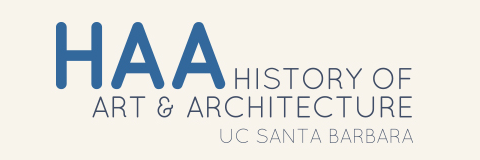
To all prospective applicants: Welcome to our graduate program!
We provide an innovative and challenging graduate education aimed at training both academics and museum professionals in art history, visual culture, and the history of architecture and urbanism.
The best way to learn about our graduate program is to explore some of the links listed in the menus above this page. For an overview, read our introductory Graduate Studies page. There are also pages where you can learn about funding resources and recent awards won by our graduate students. Down below you can meet some of our graduate alumni and hear in their own words about their experience at UCSB, and about the opportunities that have opened up for them through their study in our department.
In addition, there are links to the University's Graduate Division  , where you can find general information about graduate study at UCSB; to the departmental Graduate Student Handbook
, where you can find general information about graduate study at UCSB; to the departmental Graduate Student Handbook ![]() , which describes the academic requirements of our graduate program in detail; and the UCSB General Catalog
, which describes the academic requirements of our graduate program in detail; and the UCSB General Catalog  , where you can explore the range of course offerings available across the University. And if you're the kind of person who enjoys volunteering and getting involved in the community, click the link to the AD&A Museum’s Education & Outreach Program
, where you can explore the range of course offerings available across the University. And if you're the kind of person who enjoys volunteering and getting involved in the community, click the link to the AD&A Museum’s Education & Outreach Program  , founded by some of our former graduate students. This great program brings presentations about different aspects of art history to students in local schools.
, founded by some of our former graduate students. This great program brings presentations about different aspects of art history to students in local schools.
We hope you'll find answers to all of your questions on this website, but if you still have questions please don't hesitate to contact us!
Alumnus Dr. Daniel Chak-Kwong Lau's Chinese Calligraphy Performance
(Associate Professor of Art History and Chinese Calligraphy, Hong Kong Baptist University, HAA Ph.D. 2006)
Dr. Claudia Moser
Graduate Advisor
Current Students 2024-2025
moser@arthistory.ucsb.edu 
Dr. Richard Wittman
Graduate Admissions Advisor
Incoming Students 2024-2025
wittman@arthistory.ucsb.edu 
Hunter Morelos-Clark
Graduate Program Advisor
arthistory-grad-advisor@ucsb.edu 
Amara Solari, Professor of Art History and Anthropology, Department of Art History, Pennsylvania State University, Guggenheim Fellow 2024 (Ph.D. 2007)
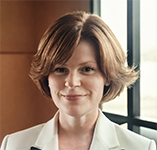 With the advantage of nearly two decades of hindsight and having trained graduate students in a R1 institution, I recognize that the UCSB art history program’s greatest strength is the equal balance of intellectual rigor and pedagogical preparation it provides for its graduate students. The wide array of course offerings, provided by the individual expertise of the department's supportive faculty, allowed me to grow as a scholar, ultimately resulting in the interdisciplinary focus of my own research. Attending in the early 2000s as a student of “non-Western” art history–that is, prior to recent calls for academic “decolonization”– I can attest that UCSB was ahead of its time, never questioning (and in fact, funding) my atypical research needs, such as training in Indigenous languages. The department had an inviting and expansive view of what constituted the discipline of art history, engendering a communal environment that I try to replicate in my own department today. Additionally, the art history program also focused on imparting pedagogical skills to its graduate students when we served as Teaching Assistants. The various classes I TAed for provided didactic examples to follow, ensuring that upon graduation I would be able to easily transition to the role of Assistant Professor. I thus graduated from UCSB competitive in the job market, securing a tenure track position and eventually being promoted to Full Professor at The Pennsylvania State University, where I am still employed. I can state without hesitation that I owe my entire career to the stellar training I received in the UCSB art history program, and I remain eternally grateful to my mentors.
With the advantage of nearly two decades of hindsight and having trained graduate students in a R1 institution, I recognize that the UCSB art history program’s greatest strength is the equal balance of intellectual rigor and pedagogical preparation it provides for its graduate students. The wide array of course offerings, provided by the individual expertise of the department's supportive faculty, allowed me to grow as a scholar, ultimately resulting in the interdisciplinary focus of my own research. Attending in the early 2000s as a student of “non-Western” art history–that is, prior to recent calls for academic “decolonization”– I can attest that UCSB was ahead of its time, never questioning (and in fact, funding) my atypical research needs, such as training in Indigenous languages. The department had an inviting and expansive view of what constituted the discipline of art history, engendering a communal environment that I try to replicate in my own department today. Additionally, the art history program also focused on imparting pedagogical skills to its graduate students when we served as Teaching Assistants. The various classes I TAed for provided didactic examples to follow, ensuring that upon graduation I would be able to easily transition to the role of Assistant Professor. I thus graduated from UCSB competitive in the job market, securing a tenure track position and eventually being promoted to Full Professor at The Pennsylvania State University, where I am still employed. I can state without hesitation that I owe my entire career to the stellar training I received in the UCSB art history program, and I remain eternally grateful to my mentors.
George Flaherty, Associate Professor of Latin American and Latinx Art and Co-Director of the Center for Latin American Visual Studies (CLAVIS), University of Texas at Austin (Ph.D. 2011)
 I was drawn to UC Santa Barbara because it offered a theoretically-informed faculty and a cluster of world-class interdisciplinary programs that I was able to integrate seamlessly into my course of study. Upon arriving I found that departmental resources were readily available to students with ambition, including foreign language study and conference and research travel support. I was able to take advantage of a variety of professional experiences outside the seminar room, from serving as the graduate assistant for the Subaltern-Popular Workshop, a University of California-wide research group, to conducting research for an international touring exhibition organized by the Santa Barbara Museum of Art and a leading Mexican museum. The contacts I made in the process greatly facilitated my current dissertation research in Mexico City. That said, what defines my experience at UCSB was the close mentorship I received from my advisor but also several other faculty members, all of whom had a vested interest in my development as a scholar.
I was drawn to UC Santa Barbara because it offered a theoretically-informed faculty and a cluster of world-class interdisciplinary programs that I was able to integrate seamlessly into my course of study. Upon arriving I found that departmental resources were readily available to students with ambition, including foreign language study and conference and research travel support. I was able to take advantage of a variety of professional experiences outside the seminar room, from serving as the graduate assistant for the Subaltern-Popular Workshop, a University of California-wide research group, to conducting research for an international touring exhibition organized by the Santa Barbara Museum of Art and a leading Mexican museum. The contacts I made in the process greatly facilitated my current dissertation research in Mexico City. That said, what defines my experience at UCSB was the close mentorship I received from my advisor but also several other faculty members, all of whom had a vested interest in my development as a scholar.
Yun-chen Lu, Assistant Professor, Department of History of Art and Architecture, DePaul University (Ph.D. 2022)
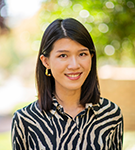 UCSB provided me with unparalleled training in art historical research, writing, and teaching. Faculty offered fascinating seminars across diverse fields and provided generous advice and support to guide me through every step of the PhD program—from fulfilling course requirements and developing a dissertation project to applying for fellowships and navigating the job market. Teaching opportunities in the department allowed me to learn from experienced faculty and to develop new teaching and communicating skills. In addition to the solid research and teaching training in HAA, I was able to explore different disciplines and area studies at UCSB. Also, as an international student, I greatly benefited from UCSB’s resources on academic writing and oral speaking for non-native English language students. Looking back now, I’m most grateful for the positive, supportive, and inspiring environment that is collectively built by HAA faculty, staff, and students. The program provided me with a second home and well-prepared me for developing an academic career in the U.S.
UCSB provided me with unparalleled training in art historical research, writing, and teaching. Faculty offered fascinating seminars across diverse fields and provided generous advice and support to guide me through every step of the PhD program—from fulfilling course requirements and developing a dissertation project to applying for fellowships and navigating the job market. Teaching opportunities in the department allowed me to learn from experienced faculty and to develop new teaching and communicating skills. In addition to the solid research and teaching training in HAA, I was able to explore different disciplines and area studies at UCSB. Also, as an international student, I greatly benefited from UCSB’s resources on academic writing and oral speaking for non-native English language students. Looking back now, I’m most grateful for the positive, supportive, and inspiring environment that is collectively built by HAA faculty, staff, and students. The program provided me with a second home and well-prepared me for developing an academic career in the U.S.
Emily J. Peters, Curator, Prints and Drawings, Cleveland Museum of Art (Ph.D. 2005)
 I joined the department after five years working in the professional field of art appraisal, and I felt very welcome, with a cohort full of people with diverse academic and professional experiences like me. I was unsure whether I would pursue teaching or curatorial work but was able to explore both paths through the program. The teaching opportunities at UCSB are relatively unique, and I gained experience teaching as both a TA and as an instructor of record during summer terms. The department also has a fantastic record helping students secure external fellowships, which I feel is a particular strength of the program. I secured several prestigious fellowships for research abroad at the beginning phase of my dissertation, and then spent the writing phase on a fellowship at the Metropolitan Museum of Art. The experience I gained working with archives, visiting print rooms abroad, and working directly with collections at the Met enabled me to land a curatorial job shortly after graduation.
I joined the department after five years working in the professional field of art appraisal, and I felt very welcome, with a cohort full of people with diverse academic and professional experiences like me. I was unsure whether I would pursue teaching or curatorial work but was able to explore both paths through the program. The teaching opportunities at UCSB are relatively unique, and I gained experience teaching as both a TA and as an instructor of record during summer terms. The department also has a fantastic record helping students secure external fellowships, which I feel is a particular strength of the program. I secured several prestigious fellowships for research abroad at the beginning phase of my dissertation, and then spent the writing phase on a fellowship at the Metropolitan Museum of Art. The experience I gained working with archives, visiting print rooms abroad, and working directly with collections at the Met enabled me to land a curatorial job shortly after graduation.
Aleesa Pitchamarn Alexander, Robert M. and Ruth L. Halperin Associate Curator of Modern and Contemporary Art and Co-director of the Asian American Art Initiative, Cantor Arts Center, Stanford University (Ph.D. 2018)
 My time at UCSB allowed me to nurture, develop, and hone my critical thinking skills through rigorous work and community support. The development of a rigorous intellectual practice has directly translated into my current work as a curator at a university art museum. Without my training at UCSB, I would not be prepared to do the type of work I want to do at the level I want to do it, especially at a place like Stanford, where expectations are high. Serving as a teaching assistant for many different courses also allowed me to refine my public speaking skills—a requisite for my current job—and become a generalist, which is especially valuable in the museum space. UCSB’s proximity to Los Angeles was also beneficial, particularly for those of us interested in contemporary art, as we had access to world-class museums and artists. Finally, I maintain valuable relationships with colleagues I met at UCSB, whether they be former mentors or classmates. Engaging with my many accomplished UCSB colleagues after completing my degree has been gratifying, and this network continues to serve as a meaningful resource.
My time at UCSB allowed me to nurture, develop, and hone my critical thinking skills through rigorous work and community support. The development of a rigorous intellectual practice has directly translated into my current work as a curator at a university art museum. Without my training at UCSB, I would not be prepared to do the type of work I want to do at the level I want to do it, especially at a place like Stanford, where expectations are high. Serving as a teaching assistant for many different courses also allowed me to refine my public speaking skills—a requisite for my current job—and become a generalist, which is especially valuable in the museum space. UCSB’s proximity to Los Angeles was also beneficial, particularly for those of us interested in contemporary art, as we had access to world-class museums and artists. Finally, I maintain valuable relationships with colleagues I met at UCSB, whether they be former mentors or classmates. Engaging with my many accomplished UCSB colleagues after completing my degree has been gratifying, and this network continues to serve as a meaningful resource.
Cody Hartley, Director, Georgia O'Keeffe Museum, Santa Fe, NM (Ph.D. 2005)
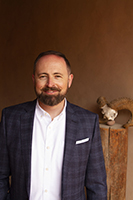 UCSB offered the perfect balance of breadth and intellectual depth in art history, providing a rich appreciation for the global diversity of artistic practice through innovative and rigorous seminars while also allowing me to pursue my research interests. Supportive and knowledgeable faculty provided outstanding guidance, helping me to chart my ambitions and achieve my goals. The department provided rock-solid academic training, as well as the practical professional experience essential to securing those first jobs. For me, this included opportunities to study museums as a dissertation topic while learning about their workings first-hand, from the inside, through internships and fellowships. Internships led to jobs, ultimately allowing me to work with some of the finest collections and institutions in the country. At every step of my career, I have benefited from the skills and network developed in Santa Barbara.
UCSB offered the perfect balance of breadth and intellectual depth in art history, providing a rich appreciation for the global diversity of artistic practice through innovative and rigorous seminars while also allowing me to pursue my research interests. Supportive and knowledgeable faculty provided outstanding guidance, helping me to chart my ambitions and achieve my goals. The department provided rock-solid academic training, as well as the practical professional experience essential to securing those first jobs. For me, this included opportunities to study museums as a dissertation topic while learning about their workings first-hand, from the inside, through internships and fellowships. Internships led to jobs, ultimately allowing me to work with some of the finest collections and institutions in the country. At every step of my career, I have benefited from the skills and network developed in Santa Barbara.
Austen Barron Bailly, Chief Curator, Crystal Bridges Museum of American Art, Bentonville, AR (Ph.D. 2009)
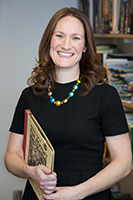 UCSB provided me with truly outstanding training in art historical methods and writing, and I believe this is a great strength of the program, in addition to its breadth. Superb faculty lead intensive and fascinating seminars across diverse fields founded on innovative and rigorous ways to approach, question, evaluate, revise, theorize, and develop the avenue of inquiry. Opportunities to serve as a teaching assistant, present at graduate symposia and use UCSB’s pre-dissertation travel fellowships to jumpstart dissertation research provide valuable financial support and experience. More broadly, the academic, cultural and professional opportunities afforded by UCSB’s proximity to Los Angeles and Southern California’s major museums and cultural institutions as well as other UC campuses can’t be underestimated. Personally, I was able to pursue my doctorate while working at LACMA, participate in graduate seminars at the Getty Research Institute, and benefit from viewing world renowned collections and exhibitions relevant to my graduate coursework in African art, photography, history of collecting, and American art. My doctorate from UCSB has proven to be a cornerstone of my curatorial career.
UCSB provided me with truly outstanding training in art historical methods and writing, and I believe this is a great strength of the program, in addition to its breadth. Superb faculty lead intensive and fascinating seminars across diverse fields founded on innovative and rigorous ways to approach, question, evaluate, revise, theorize, and develop the avenue of inquiry. Opportunities to serve as a teaching assistant, present at graduate symposia and use UCSB’s pre-dissertation travel fellowships to jumpstart dissertation research provide valuable financial support and experience. More broadly, the academic, cultural and professional opportunities afforded by UCSB’s proximity to Los Angeles and Southern California’s major museums and cultural institutions as well as other UC campuses can’t be underestimated. Personally, I was able to pursue my doctorate while working at LACMA, participate in graduate seminars at the Getty Research Institute, and benefit from viewing world renowned collections and exhibitions relevant to my graduate coursework in African art, photography, history of collecting, and American art. My doctorate from UCSB has proven to be a cornerstone of my curatorial career.
Suzanne van de Meerendonk, Bader Curator of European Art, Agnes Etherington Art Centre, Queen’s University, Kingston, ON, Canada (Ph. D. 2018)
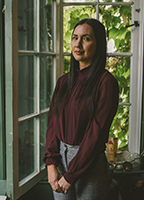 Coming to UCSB as an international student, I was struck by the broad exposure to disciplines and specializations within the field we were encouraged to study—both within the department and beyond. Being pushed to think fluidly and broaden my intellectual horizon proved invaluable when developing the methodological frameworks for my dissertation, and helped prepare me to seek innovative approaches to curatorial projects today. In addition to receiving mentorship from Professors, I built an incredible peer network of colleagues in academia, museums and beyond, from whom I continue to learn. In no small part this was due to the active student life and sense of community that was fostered (and for which Santa Barbara is truly an ideal place). I was also able to gain experience with the Art, Design & Architecture Museum on campus, both through coursework offered in collaboration with the museum and as a Murray Roman Curatorial Fellow, overseeing the undergraduate internship program and seminar for the duration of an academic year. These opportunities proved very helpful in building a resume that made me a competitive candidate for positions in university museums in particular.
Coming to UCSB as an international student, I was struck by the broad exposure to disciplines and specializations within the field we were encouraged to study—both within the department and beyond. Being pushed to think fluidly and broaden my intellectual horizon proved invaluable when developing the methodological frameworks for my dissertation, and helped prepare me to seek innovative approaches to curatorial projects today. In addition to receiving mentorship from Professors, I built an incredible peer network of colleagues in academia, museums and beyond, from whom I continue to learn. In no small part this was due to the active student life and sense of community that was fostered (and for which Santa Barbara is truly an ideal place). I was also able to gain experience with the Art, Design & Architecture Museum on campus, both through coursework offered in collaboration with the museum and as a Murray Roman Curatorial Fellow, overseeing the undergraduate internship program and seminar for the duration of an academic year. These opportunities proved very helpful in building a resume that made me a competitive candidate for positions in university museums in particular.
Maggie Bell, Associate Curator, Norton Simon Museum, Pasadena, CA (Ph.D. 2019)
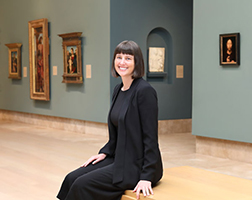 As a graduate student in the Department of the History of Art and Architecture at UC Santa Barbara, I was encouraged to expand my engagement with the field beyond the seminar room by pursuing fellowship opportunities and curatorial projects. With the support of faculty who prioritized assisting with grant applications, I received a Kress Fellowship at the Kunsthistorisches Institut in Florence, which was essential to my dissertation research and to establishing an international network of colleagues. I was fortunate to have a strong spirit of collaboration among my cohort, from which arose innovative curatorial and community-focused projects at the Art, Design and Architecture Museum and the Santa Barbara Historical Museum, supported by faculty mentorship. Since receiving my PhD, the connections I formed at UCSB remain invaluable.
As a graduate student in the Department of the History of Art and Architecture at UC Santa Barbara, I was encouraged to expand my engagement with the field beyond the seminar room by pursuing fellowship opportunities and curatorial projects. With the support of faculty who prioritized assisting with grant applications, I received a Kress Fellowship at the Kunsthistorisches Institut in Florence, which was essential to my dissertation research and to establishing an international network of colleagues. I was fortunate to have a strong spirit of collaboration among my cohort, from which arose innovative curatorial and community-focused projects at the Art, Design and Architecture Museum and the Santa Barbara Historical Museum, supported by faculty mentorship. Since receiving my PhD, the connections I formed at UCSB remain invaluable.
Seokwon Choi, Assistant Professor, Department of Oriental Painting, College of Fine Arts, Seoul National University, Korea (Ph.D. 2016)
 The doctoral program at UCSB inspired me to pursue comprehensive expertise by offering diverse seminars that explore the histories and theories of global art and architecture from ancient times to the contemporary era. Through discussion- and research-based seminar courses, I refined my skills in logical reasoning, critical analysis, and interdisciplinary perspectives. Participating in East Asian Studies courses and collaborative seminars with UCLA students broadened my scholarly horizons, facilitating valuable academic exchanges. A significant milestone was my tenure as a Doctoral Curatorial Intern at the Santa Barbara Museum of Art, where I contributed to "The Artful Recluse" exhibition, which showcased 17th-century Chinese painting. This opportunity deepened my proficiency in academic research and curatorial methodologies. The insightful and dedicated mentorship of my advisor and faculty, complemented by the program's various financial support, extensive art library, and professional network, fostered my growth as a discerning art historian and critic.
The doctoral program at UCSB inspired me to pursue comprehensive expertise by offering diverse seminars that explore the histories and theories of global art and architecture from ancient times to the contemporary era. Through discussion- and research-based seminar courses, I refined my skills in logical reasoning, critical analysis, and interdisciplinary perspectives. Participating in East Asian Studies courses and collaborative seminars with UCLA students broadened my scholarly horizons, facilitating valuable academic exchanges. A significant milestone was my tenure as a Doctoral Curatorial Intern at the Santa Barbara Museum of Art, where I contributed to "The Artful Recluse" exhibition, which showcased 17th-century Chinese painting. This opportunity deepened my proficiency in academic research and curatorial methodologies. The insightful and dedicated mentorship of my advisor and faculty, complemented by the program's various financial support, extensive art library, and professional network, fostered my growth as a discerning art historian and critic.
Sarah Thompson, Associate Professor of Art History School of Art, College of Art and Design, Rochester Institute of Technology (Ph.D. 2009)
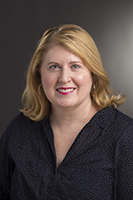 While enrolled at UCSB, I benefited from both the depth and the breadth of the graduate program: I had focused attention and training in methodology from my dissertation advisor, but also opportunities to work with faculty across a variety of subfields, learning from a diversity of perspectives. I also gained valuable insight from my peers, and the encouragement of the department community helped me earn grants and hone my research practices. Ample opportunities to teach meant that I established a strong teaching portfolio before entering the job market. The relationships forged in my time at UCSB helped to sustain me during the demanding early years on the tenure track, and continue to enrich my experience as an art historian.
While enrolled at UCSB, I benefited from both the depth and the breadth of the graduate program: I had focused attention and training in methodology from my dissertation advisor, but also opportunities to work with faculty across a variety of subfields, learning from a diversity of perspectives. I also gained valuable insight from my peers, and the encouragement of the department community helped me earn grants and hone my research practices. Ample opportunities to teach meant that I established a strong teaching portfolio before entering the job market. The relationships forged in my time at UCSB helped to sustain me during the demanding early years on the tenure track, and continue to enrich my experience as an art historian.
